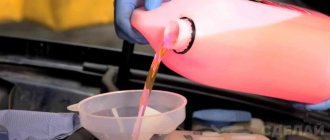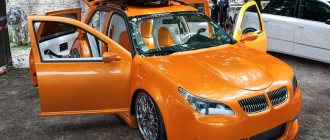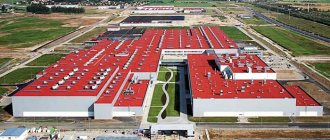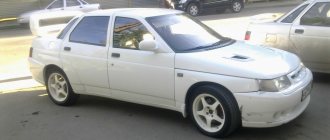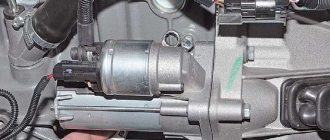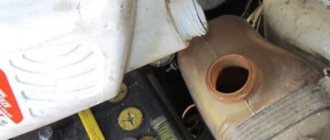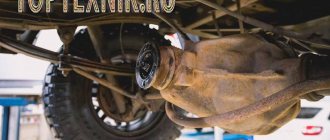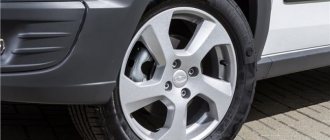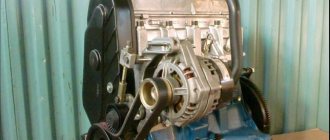When developing a new car model, each manufacturer strives to increase the dynamics of its products, but at the same time not to deprive the car of safety. Although the dynamic characteristics largely depend on the type of engine, the car body plays a significant role. The heavier it is, the more effort the internal combustion engine will exert in order to accelerate the vehicle. But making the car too light often has a negative impact on downforce.
By making their products lighter, manufacturers strive to improve the aerodynamic properties of the body (what aerodynamics is is discussed in another review ). The weight of the vehicle is reduced not only through the installation of units made of light alloy materials, but also thanks to lightweight body parts. Let's look at what materials are used to make car bodies, as well as the pros and cons of each of them.
Background of automobile bodies
The body of a modern car is given no less attention than its mechanisms. Here are the parameters it must meet:
- Lasting. In the event of a collision, it should not injure people in the cabin. Torsional rigidity should ensure that the car maintains its shape when driving over uneven terrain. The smaller this parameter is, the greater the likelihood that the car frame will deform and the vehicle will be unsuitable for further use. Particular attention is paid to the strength of the front part of the roof. The so-called "moose" test helps the automaker determine how safe the car will be in a collision with a tall animal, such as a deer or elk (the entire mass of the carcass is located on the windshield and the roof crossbar above it).
- Modern design. First of all, sophisticated motorists pay attention to the shape of the body, and not just to the technical part of the car.
- Safety. Everyone inside the car must be protected from external influences, including in the event of a side collision.
- Versatility. The material from which the car body is made must withstand different weather conditions. In addition to aesthetics, paint coating is used to protect materials that are susceptible to aggressive moisture.
- Durability. There are often cases when the creator skimps on body material, which is why the car becomes unusable after just a few years of use.
- Maintainability. To avoid having to throw away the car after a minor accident, the production of modern body types involves modular assembly. This means that the damaged part can be replaced with a similar new one.
- Affordable price. If the car body is made of expensive materials, a huge number of unclaimed models will accumulate on the sites of automakers. This often happens not because of poor quality, but because of the high cost of vehicles.
In order for the body model to meet all these parameters, manufacturers have to take into account the characteristics of the materials from which the frame and outer body panels are made.
To ensure that car production does not require a lot of resources, company engineers develop body models that allow them to combine their main function with additional ones. For example, the main units and interior parts are attached to the car structure.
Initially, the design of cars was based on a frame to which the remaining components of the car were attached. This type is still present in some car models. An example of this is full-fledged SUVs (most jeeps simply have a reinforced body structure, but no frame; this type of SUV is called a crossover ) and trucks. On the first cars, each panel attached to the frame structure could be made not only of metal, but also of wood.
The first model with a supporting structure without a frame was the Lancia Lambda, which rolled off the assembly line in 1921. The European model Citroen B10, which went on sale in 1924, received a solid steel body structure.
Lancia Lambda Citroen B10
This development turned out to be so popular that most manufacturers of those times rarely deviated from the concept of an all-steel monocoque body. These cars were safe. Some companies refused steel for two reasons. Firstly, this material was not available in all countries, especially during the war years. Secondly, the steel body is very heavy, so some people made compromises in body materials in order to install an internal combustion engine with less power.
During the Second World War, steel was in short supply throughout the world, since this metal was entirely used for military needs. Out of a desire to stay afloat, some companies decided to produce the bodies of their models from alternative materials. So, in those years, cars with aluminum bodies first appeared. An example of such models is the Land Rover 1-Series (the body consisted of aluminum panels).
Another alternative is a wooden frame. An example of such cars is the Willys Jeep Stations Wagon modification Woodie.
Since the wooden body is not durable and needed serious care, this idea was soon abandoned, but as for aluminum structures, manufacturers seriously thought about introducing this technology into modern production. Although the main apparent reason was a steel shortage, this was not actually the motivating factor that led automakers to look for alternative options.
- Since the global fuel crisis, most car brands have had to reconsider their production technology. First of all, the audience requiring powerful and high-capacity engines has sharply decreased due to the high cost of fuel. Motorists began to look for less power-hungry cars. And in order for transport with a smaller engine to be sufficiently dynamic, a lightweight, but at the same time sufficiently durable material was required.
- Over time, environmental standards for vehicle emissions have become increasingly stringent throughout the world. For this reason, technology began to be introduced to reduce fuel consumption, improve the quality of combustion of the air-fuel mixture and increase the efficiency of the power unit. To do this, you need to reduce the weight of the entire car.
Over time, developments from composite materials appeared, which made it possible to further reduce the weight of vehicles. Let's consider what is special about each material that is used to make car bodies.
Why do new cars have such fragile bodies?
It would be categorically incorrect to say that modern cars are inferior to outdated models in everything. To be fair, we note that the thin metal of the body is not dictated only by the manufacturer’s desire to save money, as many people think. There are many other objective reasons (not obvious to many ordinary people) for this. To begin with, let us remember that iron is by no means a light material.
Advantages of a lightweight car body:
- Safety - no one has canceled the fundamental laws of physics, and the higher the mass of the body, the greater its inertia, and therefore the force acting on the car at the moment of collision. Accordingly, a lighter car will more easily “survive” an accident, and this has been proven in practice by numerous crash tests. Moreover, the “soft” car body incorporates the concept of controlled deformation, i.e. in the event of a collision, it will not crumple as it should, but along the safest trajectory for passengers. Statistics have long shown that despite increased speeds, the survival rate in cars of the latest brands is much higher, although their bodies are indeed thinner.
- Cost-effectiveness - again, remember the laws of physics. The greater the mass of the car, the more energy (fuel) needs to be spent on its movement. It turns out that not only the manufacturer saves on a lighter body, but also the car owner himself. So, the costs of body repairs are more than offset by savings on fuel.
- Ease of control and maneuverability - and again, omnipresent physical laws. This time the force of energy intervenes. A heavy car is more difficult to pick up speed and brakes, it fits extremely poorly into turns at increased modern speeds or when there is ice, and it requires more skill from the driver to change lanes along the way. But the literacy and responsibility of some road users is now extremely low. And just imagine: a heavy “tank on wheels” is flying, driven by a school graduate who received her license yesterday, which can destroy everything in its path - would you like this option?
- Aerodynamics - the use of new body manufacturing technologies will make it possible to achieve the most complex aerodynamic profiles, the most bizarre shapes that are not achievable by traditional methods of processing thick sheets of metal. Better aerodynamics result in reduced fuel consumption, higher speeds, and excellent handling.
Steel body: advantages and disadvantages
Most body elements of a modern car are made of rolled steel. The thickness of the metal in some sections reaches 2.5 millimeters. Moreover, low-carbon sheet material is used predominantly in the load-bearing part. Thanks to this, the car is quite light and at the same time durable.
Today steel is not in short supply. This metal has high strength; elements of various shapes can be stamped from it, and parts can be easily fastened together using spot welding. When manufacturing a car, engineers pay attention to passive safety, and technologists pay attention to the ease of processing the material, so that the cost of transport is as low as possible.
And for metallurgy, the most difficult task is to please both engineers and technologists. Taking into account the desired properties, a special grade of steel was developed that has the ideal combination of drawability and sufficient strength of the finished product. This simplifies the production of body panels and increases the reliability of the car frame.
Here are some more advantages of a steel body:
- Repairing steel products is the easiest - just buy a new element, for example, a wing, and replace it;
- It is easy to recycle - steel is highly recyclable, so the manufacturer always has the opportunity to obtain cheap raw materials;
- The technology for manufacturing rolled steel is simpler than processing light-alloy analogues, so the raw materials are cheaper.
Despite these advantages, steel products have several significant disadvantages:
- Finished products are the heaviest;
- Rust quickly appears on unprotected parts. If the element is not protected with a paint coating, the damage will quickly render the body unusable;
- In order for sheet steel to have increased rigidity, the part must be stamped many times;
- The resource of steel products is the smallest compared to non-ferrous metals.
Today, the properties of steel are improved by adding certain chemical elements to the composition that increase its strength, oxidation resistance and ductility characteristics (TWIP grade steel can stretch up to 70%, and its maximum strength is 1300 MPa).
Purpose and requirements
If the engine is called the heart of the car, then the body is its shell or body. Be that as it may, the body is the most expensive element of the car. Its main purpose is to protect passengers and internal components from environmental influences, to accommodate seats and other elements.
Car body
As an important structural element, the body is subject to certain requirements, including:
- corrosion resistance and durability;
- relatively small weight;
- required rigidity;
- optimal shape to ensure repair and maintenance of all vehicle components, ease of loading luggage;
- ensuring the necessary level of comfort for passengers and the driver;
- ensuring a certain level of passive safety in a collision;
- compliance with modern standards and design trends.
Aluminum body: advantages and disadvantages
Previously, aluminum was only used to make panels that were attached to a steel structure. Modern developments in aluminum production make it possible to use the material also to create frame elements.
Although this metal is less susceptible to moisture compared to steel, it has less strength and mechanical elasticity. For this reason, to reduce the weight of a car, this metal is used to create doors, trunks, and hoods. To use aluminum in the frame, the manufacturer has to increase the thickness of the products, which often works against ease of transport.
The density of aluminum alloys is much less than that of steel, so the sound insulation in a car with such a body is much worse. To ensure that a minimum of external noise enters the interior of such a car, the manufacturer uses special noise reduction technologies, which is why the car will cost more than a similar option with a steel body.
The production of an aluminum body in the early stages is similar to the process of creating steel structures. The raw materials are broken into sheets, then they are stamped into the desired design. The parts are assembled into a common structure. Argon welding is used only for this purpose. More expensive models use laser spot welding, special glue or rivets.
Arguments in favor of an aluminum body:
- Sheet material is easier to stamp, so the panel manufacturing process requires equipment that is not as powerful as for stamping steel;
- Compared to steel bodies, an identical shape made of aluminum will be lighter, while at the same time the strength remains at the same level;
- The parts are easy to process and can be recycled;
- The material is more durable compared to steel - it is not afraid of moisture;
- The cost of the manufacturing process is lower compared to the previous version.
Not all motorists agree to buy a car with an aluminum body. The reason is that even in the case of a minor accident, car repairs will be expensive. The raw materials themselves cost more than steel, and if a part needs to be replaced, the car owner will have to look for a specialist who has special equipment for high-quality connection of elements.
Surprise at car maintenance
Against the background of posts about car services.
The previous car had thick pile mats on a foam base. They collected dirt and dust perfectly, and they looked great. But there was a problem - cleaning the rugs themselves. It is impossible to wash them completely; after any washing with any means or equipment, a little sand or something like that remained in them. And most importantly, they need to be dried specially; they do not dry on their own in the salon, but go out.
I went to the dealer for my first regular maintenance. There were no questions regarding routine maintenance. He asked me not to touch the rugs. But at the car wash they stupidly wet them and put them back.
He had a fight, cried and took the rugs to the dacha to dry.
At the second maintenance, I decided that I would “outplay” the washers. Before handing the car over to the manager, I put the mats in the trunk.
They gave me a car with damp floor mats inside. Service.
The third time I received a call from the dealer and offered to sign up for the next maintenance. I refused, telling them this fascinating story. The girl on the phone swore and swore that this would never happen again. And the maintenance deadline was approaching and I agreed.
When recording, I asked to do it wherever possible. When handing over the car to the manager, I told him about this three times.
And so I pick up the car. I open the door, and lo and behold. I see a dirty, dry rug. I'm leaving for the office happy. In the middle, I walk up to the car, sit down, and realize that it’s not my car, but a steam room. It's close to +30 outside. What's the matter?
We washed and folded all the floor mats except the driver's! Bingo.
Plastic body: advantages and disadvantages
The second half of the twentieth century was marked by the emergence of plastic. The popularity of this material is explained by the fact that any structure can be made from it, which will be much lighter than even aluminum.
Plastic does not require paint coating. It is enough to add the necessary dyes to the raw materials, and the product acquires the desired shade. In addition, it does not fade and does not need to be repainted when scratches appear on it. Compared to metal, plastic is more durable; it does not react with water at all, so it does not rust.
The Khadi model has a plastic body
The cost of manufacturing plastic panels is much lower, since powerful presses are not needed for embossing. The heated raw material is fluid, thanks to which the shape of body parts can be absolutely any, which is difficult to achieve when using metal.
Despite these obvious advantages, plastic has a very big drawback - its strength is directly related to operating conditions. So, if the air temperature outside drops below zero, the parts become fragile. Even a small load can cause the material to burst or break into pieces. On the other hand, as the temperature increases, its elasticity increases. Some types of plastics warp when heated in the sun.
Here are some other reasons why plastic bodies are less practical:
- Damaged parts can be recycled, but this process requires special, expensive equipment. The same goes for plastic production.
- During the manufacture of plastic products, large amounts of harmful substances are released into the atmosphere;
- Load-bearing parts of the body cannot be made from plastic, since even a large piece of material is not as strong as thin metal;
- If a plastic panel is damaged, it can be easily and quickly replaced with a new one, but this is much more expensive than welding a metal patch to the metal.
Although these days there are various developments that eliminate most of the listed problems, it has still not been possible to bring the technology to ideal. For this reason, bumpers, decorative inserts, moldings are mainly made from plastic, and only in some car models - fenders.
Body made of composite materials: advantages and disadvantages
The term composite means a material that contains more than two components. During the process of creating the material, the composite acquires a homogeneous structure, due to which the final product will have the properties of two (or more) substances that make up the raw material.
Often, a composite will be obtained by gluing or sintering layers of different materials. Often, to increase the strength of a part, each individual layer is reinforced so that the material does not peel off during operation.
Monocoque body
The most common composite used in the automotive industry is fiberglass. The material is obtained by adding a polymer filler to fiberglass. External body elements are made from this material, for example, bumpers, radiator grilles, and sometimes head optics (more often they are made of glass, and lightweight versions are made of polypropylene). The installation of such parts allows the manufacturer to use steel in the design of the load-bearing parts of the body, but at the same time keep the model quite light.
In addition to the advantages listed above, polymer material occupies a worthy place in the automotive industry for the following reasons:
- The weight of the parts is minimal, but at the same time they have decent strength;
- The finished product is not afraid of the aggressive effects of moisture and sun;
- Thanks to elasticity at the raw material stage, the manufacturer can create completely different shapes of parts, including the most complex ones;
- Finished products look aesthetically pleasing;
- You can create huge body parts, and in some cases even the entire body, as is the case with kit cars (read more about such cars in a separate review ).
However, innovative technology cannot be a complete alternative to metal. Here are some reasons for this:
- The cost of polymer fillers is very high;
- The mold for making the part must be perfect. Otherwise, the element will turn out ugly;
- During the manufacturing process, it is extremely important to keep the workplace clean;
- Creating durable panels takes a long time, since the composite takes a long time to dry, and some body parts are multi-layered. Often solid bodies are made from this material. The popular term “monocoque” is used to designate them. The technology for creating monocoque body types is as follows. The carbon fiber layer is glued with a polymer. Another layer of material is laid on top of it, only so that the fibers are located in a different direction, most often at a right angle. After the product is ready, it is placed in a special oven and kept for a certain time at high temperature so that the material bakes and takes on a monolithic shape;
- When a part made of composite material breaks, it is extremely difficult to repair (an example of how car bumpers are repaired is described here );
- Composite parts are not recycled, but only destroyed.
Due to the high cost and complexity of manufacturing, conventional road cars have a minimal number of parts made of fiberglass or other composite analogues. Most often, such elements are installed on a supercar. An example of such a car is the Ferrari Enzo.
2002 Ferrari Enzo
True, some exclusive models of the civilian series receive dimensional parts made of composite. An example of this is the BMW M3. This car has a roof made of carbon fiber. The material has the required strength, but at the same time allows you to move the center of gravity closer to the ground, which increases downforce when entering corners.
Another original solution in the use of lightweight materials in the car body is demonstrated by the manufacturer of the famous Corvette supercar. For almost half a century, the company has been using a spatial metal frame in its model, onto which panels made of composites are attached.
Rigidity
Rigidity is the property of a car body to resist dynamic and static loads during operation. It directly affects handling.
The higher the stiffness, the better the car's handling.
Rigidity depends on the body type, overall geometry, number of doors, car size and windows. The fastening and position of the windshield and rear windows also plays an important role. They can increase stiffness by 20-40%. To further increase rigidity, various reinforcement struts are installed.
Hatchbacks, coupes and sedans are considered the most stable. Typically, this is a three-volume layout that has additional partitions between the luggage compartment and the engine. Insufficient rigidity is shown by station wagon, passenger, and minibus bodies.
There are two stiffness parameters - bending and torsion. For torsion, resistance is checked under pressure at opposite points relative to its longitudinal axis, for example, when hanging diagonally. As already mentioned, modern cars have a solid monocoque body. In such structures, rigidity is provided mainly by side members, transverse and longitudinal beams.
Carbon body: advantages and disadvantages
With the advent of another material, the safety and at the same time lightness of cars has reached a new level. In fact, carbon is the same composite material, only a new generation of equipment makes it possible to create more durable structures than in the manufacture of monocoques. This material is used in the bodies of such famous models as the BMW i8 and i3. If carbon fiber in other cars was previously used only as decoration, these are the world's first production cars, the body of which is made entirely of carbon fiber.
Both models have a similar design: the base is a modular platform made of aluminum. All the components and mechanisms of the car are attached to it. The car body consists of two halves, which already have some interior parts. They are connected to each other during the assembly process using bolt clamps. The peculiarity of these models is that they are built on the same principle as the first cars - a frame structure (only as lightweight as possible), on which all other features are attached.
During the manufacturing process, the parts are connected to each other using a special glue. This simulates welding of metal parts. The advantage of this material is its high strength. When a car overcomes large bumps, the torsional rigidity of the body prevents it from deforming.
Another advantage of carbon fiber is that the manufacture of parts requires a minimum of workers, since high-tech equipment is controlled by electronics. The carbon body is made from individual parts that are formed in special shapes. A polymer of a special composition is pumped into the mold under high pressure. Thanks to this, the panels are stronger than if the fibers were lubricated by hand. In addition, smaller ovens are needed to bake small items.
The disadvantages of such products primarily include high cost, because expensive equipment is used that requires high-quality maintenance. Also, the price of polymers is much higher than that of aluminum. And if a part breaks, it is impossible to repair it yourself.
Here is a short video - an example of how the carbon fiber bodies of the BMW i8 are assembled:
This is how your BMW i8 is assembled. Assembling Your car BMW i8
Plastics
Recently, the possibility of using plastics in bodybuilding , although solid plastic bodies or even plastic load-bearing units are a matter of the distant future. However, there are many proposals on this topic. Since 1953, it has been producing a fairly large number of Chevrolet Corvettes with a body stamped from fiberglass-reinforced polyester material. The body had a supporting frame made of steel pipes. Of particular interest is the floor of a multilayer structure, experimentally manufactured for an open plastic body reinforced with fiberglass. In the future, it will be possible to produce lightweight, open thermoplastic bodies for special vehicles in small quantities.
The advantages of plastics are low weight, high strength and rigidity, good noise-absorbing properties due to high internal damping, easy assembly of components achieved due to the ability to manufacture large parts, and high corrosion resistance.
These undoubted advantages of plastics are countered by significant disadvantages, in particular, the high cost of materials and their manufacture, the long duration of the technological cycle, difficult installation and repair, and low energy absorption.
Due to these disadvantages, plastics are not suitable for mass-produced bodies. Nevertheless, the high manufacturability of plastics, the possibility of producing parts by casting or using vacuum drawing, make it possible to widely use plastics for both small and large stamped parts. When choosing plastics, one is mainly guided by the mechanical and thermal properties of the materials. The following most important types of plastics are used in bodybuilding:
- Thermosetting plastics (so-called thermosets) according to DIN 7708, DIN 16911, DIN 16912 standards are used for heavily loaded parts (levers, handles); if the plastic is reinforced with fiberglass, then it is also used for large parts of special (sports) cars called fiberglass, for example, for hoods, trunk lids, decorative grilles, fenders, side panels, etc.
- Various thermoplastics (the following are just some of the possible materials that are offered under various brand names). For example, acrylonitrile butadiene styrene is used for vacuum drawn parts such as radiator trims, instrument panels; acrylic glass - for transparent parts, windows, diffusers, lanterns; polyamide - for wear parts such as moving elements of locks, air duct housings, etc.; polyvinyl chloride - for elastic and soft parts, artificial leather, film coatings, hoses, seals, insulation; polyurethane—for high-strength parts; foam polyurethane - for linings, insulating materials; polyurethane with a hard surface area - for handles, armrests, trims, instrument panels, deformable front trim, etc.
- Elastomers (ethylene propylene rubber) with a monolithic shell are used, for example, for weather and aging resistant seals (doors, windows).
This list should be considered indicative only. The polymer industry is able to offer or develop materials suitable for specific applications. Plastics have the following advantages:
- low costs for manufacturing parts and low weight;
- satisfactory stability of given dimensions;
- simple processing and connection technology (gluing);
- the possibility of obtaining a surface of various colors and embossing (shiny and matte metallization is possible);
- High resistance to weather conditions and corrosion.
Due to the wide range of possibilities for the use of plastics, it is not surprising that the proportion of plastic parts (by weight) in the body is constantly increasing and currently accounts for approximately 7.8% of the total weight of European cars. Plastics offer great opportunities for reducing body weight.

